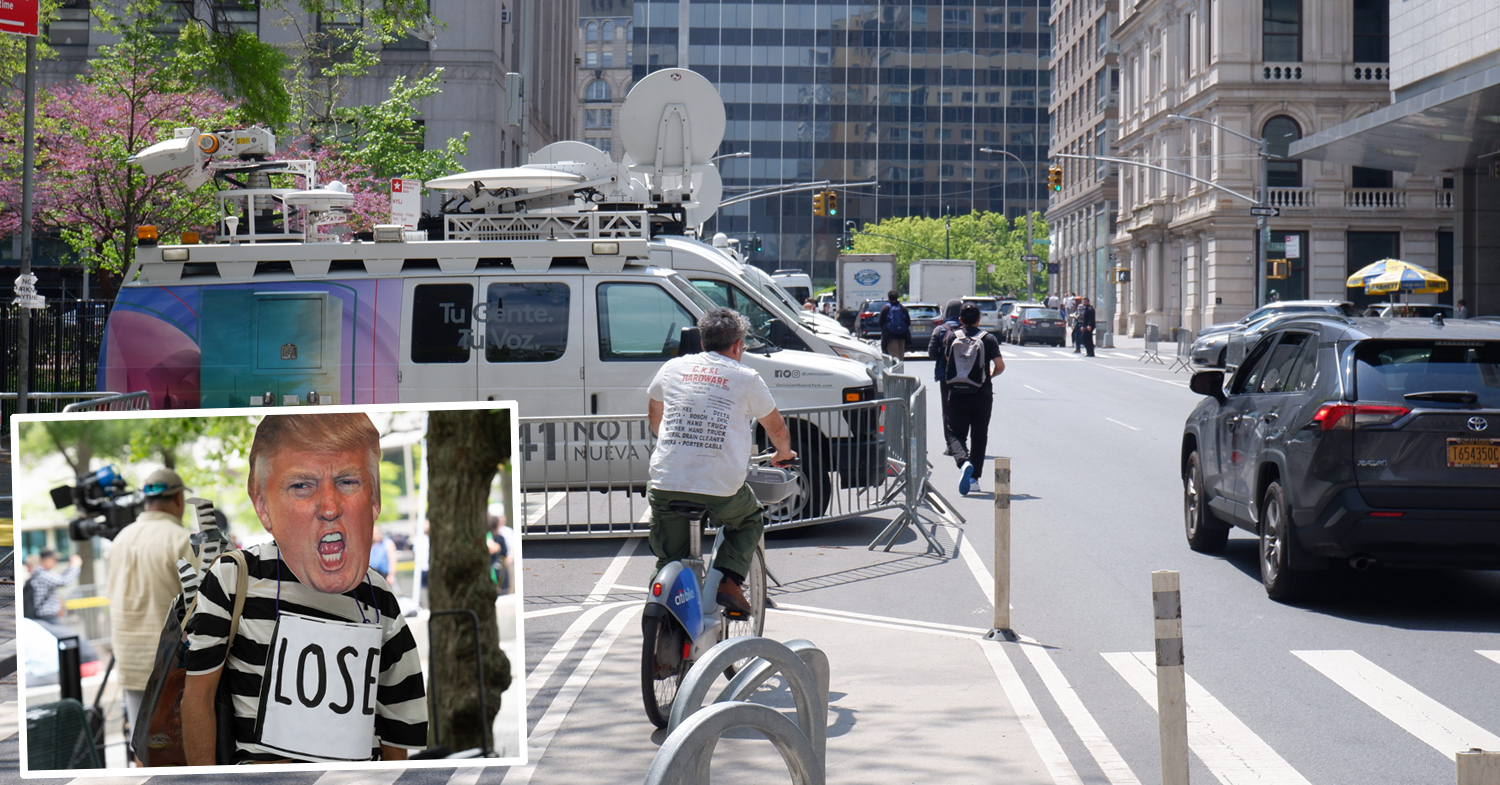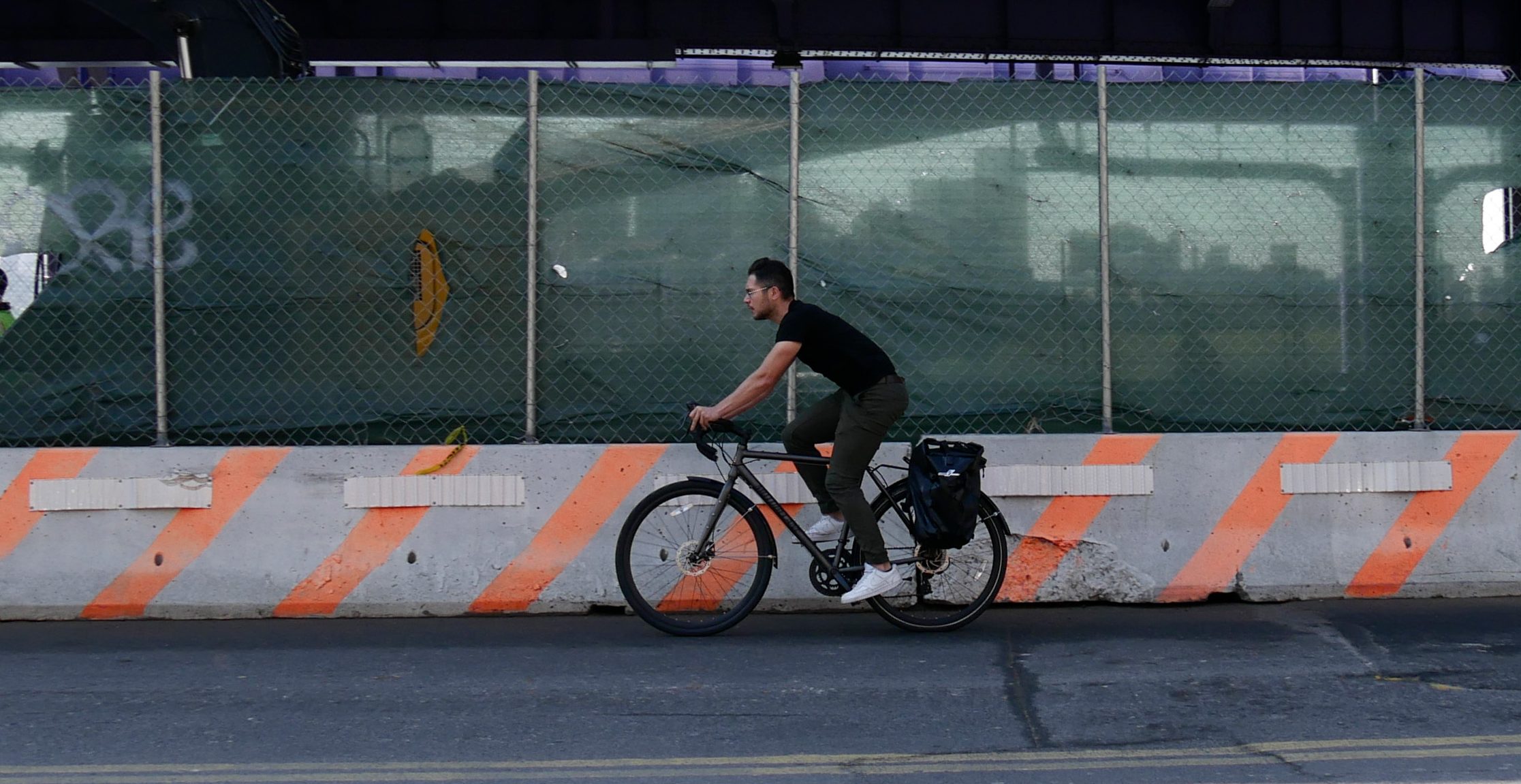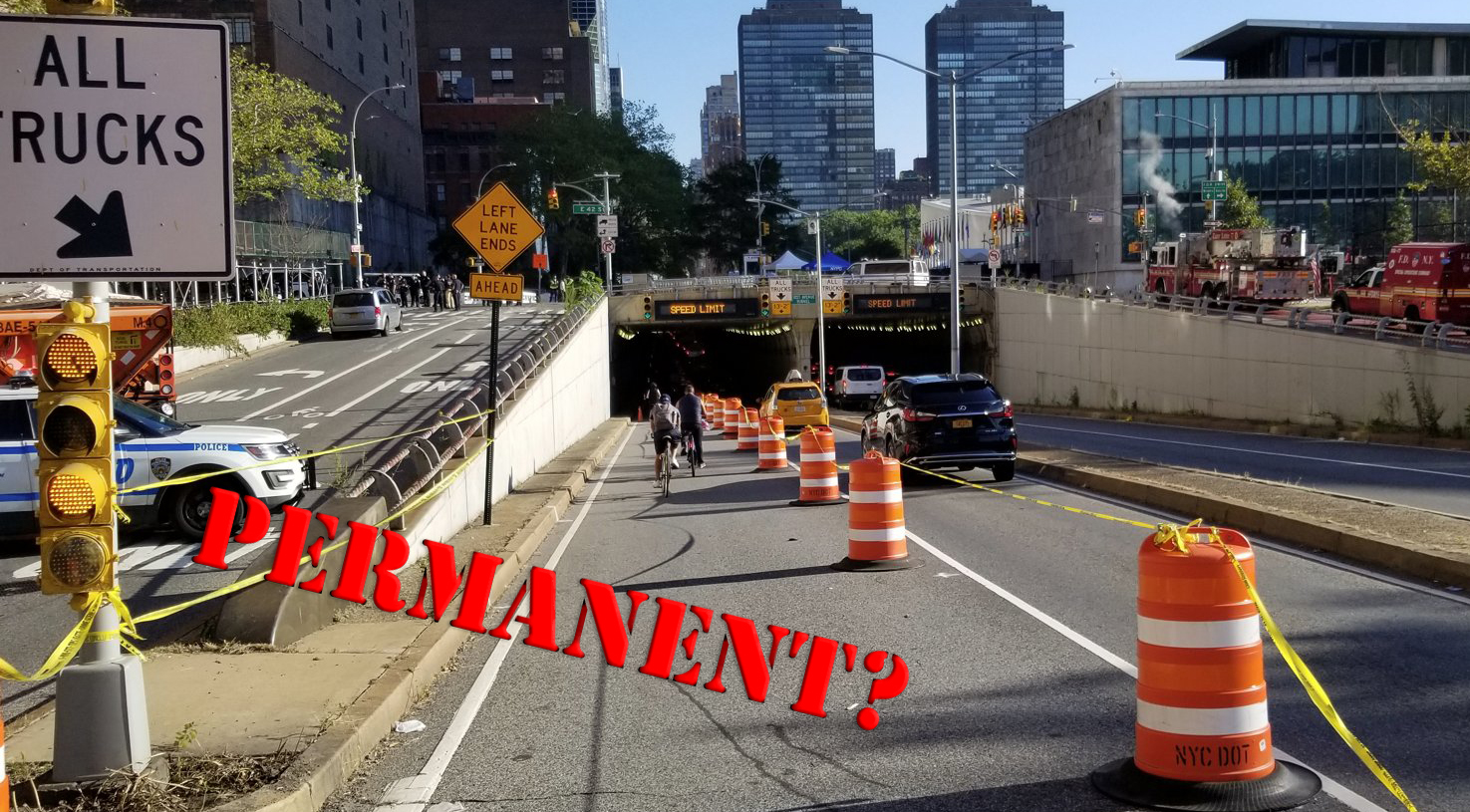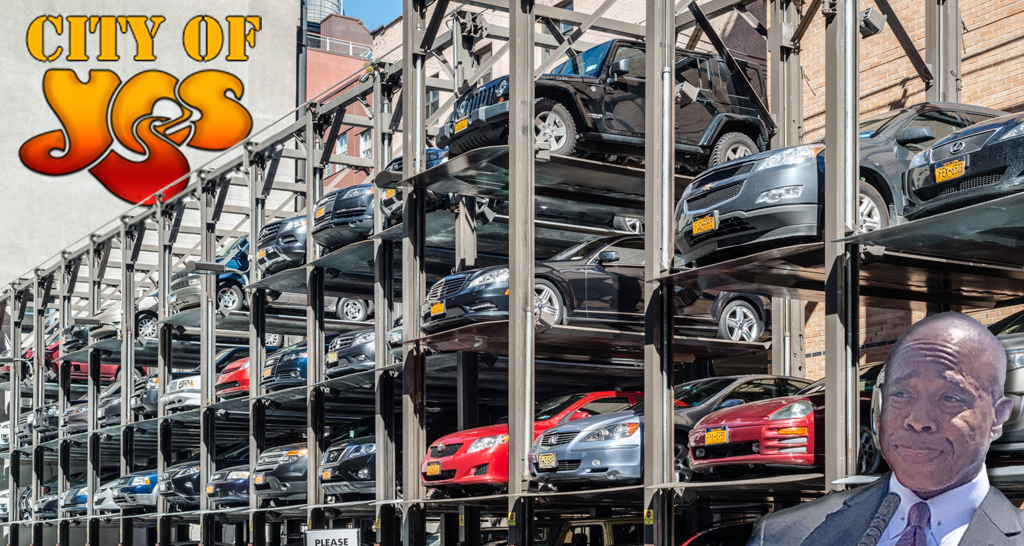Legislators and Advocates Press Case For MTA Rescue And Six-Minute Service
7:39 PM EST on November 17, 2022
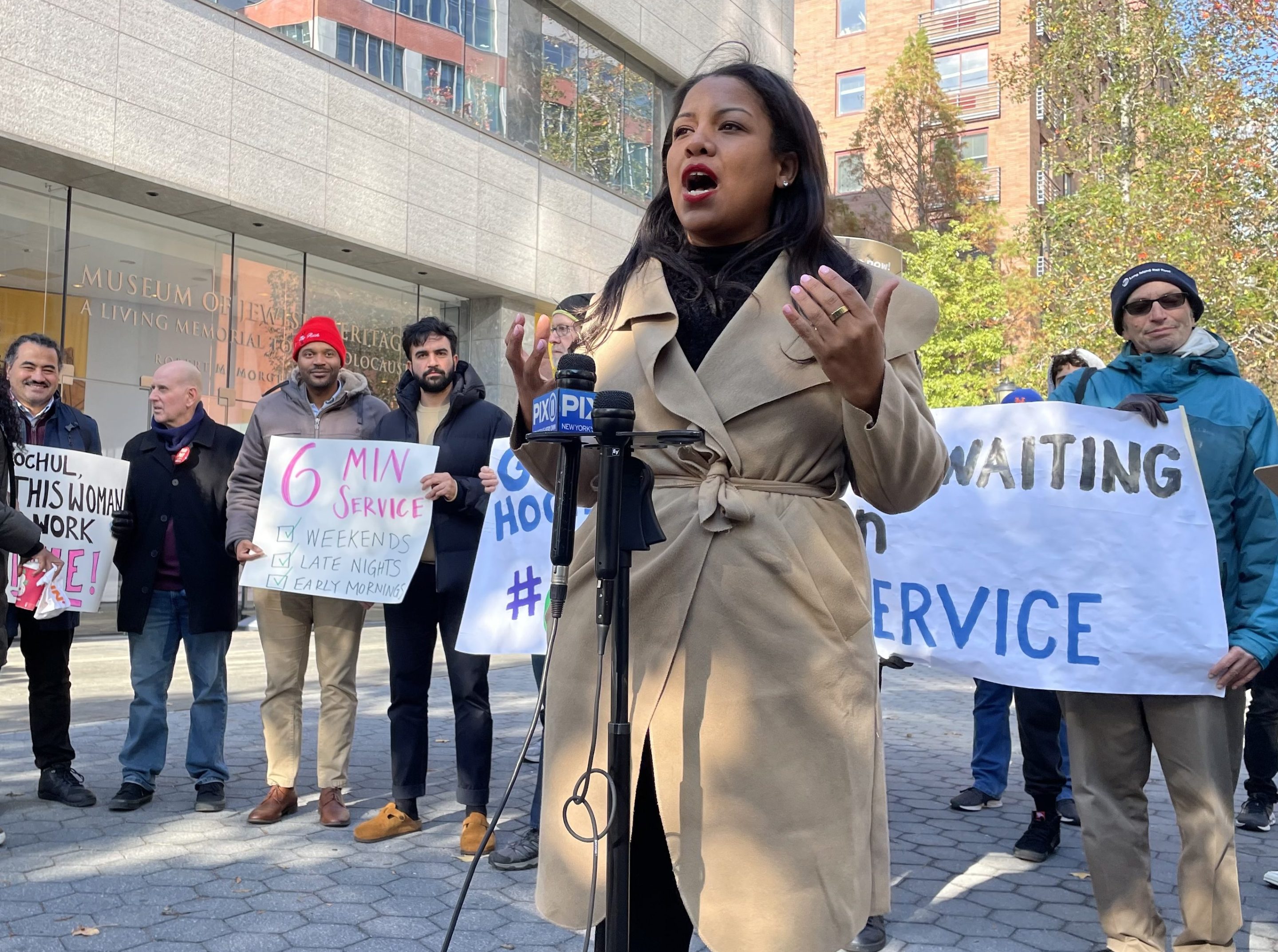
Assembly Member Amanda Septimo at Thursday’s transit funding rally. Photo: Dave Colon
The lobby is open.
With an eye on next year's budget process starting in January, state legislators and transit advocates began their push for more money for the MTA so the agency doesn't fly off the fiscal cliff and cut service and raise fares.
As the MTA struggles with questions about how to fill its massive fiscal hole, the advocates and legislators who gathered in Manhattan on Thursday said Gov. Hochul's budget shouldn't just plug the hole, it should grow the MTA's budget to the point where it can provide six-minute bus and subway service during off-peak hours.
"We know that if we implement six-minute service, the consequences would be felt for riders across all aspects of their life and across all aspects of the life of the city," said Assembly Member Zohran Mamdani, Democrat of Queens. "We know that we deserve it. We know that it would provide a generative impact upon our city's economy. The only thing that's missing is the political will.
Securing funding for better off-peak service should be essential to the city's post-COVID environment, one legislator argued.
"It's no coincidence that the poorer you are, the longer you will commute to work," said Assembly Member Amanda Septimo (D-Bronx). "That is an economic and racial justice issue. We are here to say as we rebuild New York, we are making sure that every single part of this city works for every single New Yorker."
Thursday's rally was an echo of the push from January, when the demand for a funding source for more service began after the governor's budget process already started. Not wanting to fight from behind this time, legislators explained that this new effort was an attempt to lead the budget dance.
"The governor has to include funding for the MTA and for public transit in her initial budget proposal," said State Sen. Andrew Gounardes (D-Brooklyn). "Otherwise it'll just never get back onto the table if we don't start with that already there."
The MTA's current fiscal picture is more Guernica than Thomas Kinkade at the moment. In a presentation in July, the agency admitted that ridership had fallen well short of initial projections made by McKinsey and Co., stalling at about 61 percent of pre-pandemic ridership instead of the predicted 77 percent by halfway through 2022. The agency has presented lawmakers with two options since then.
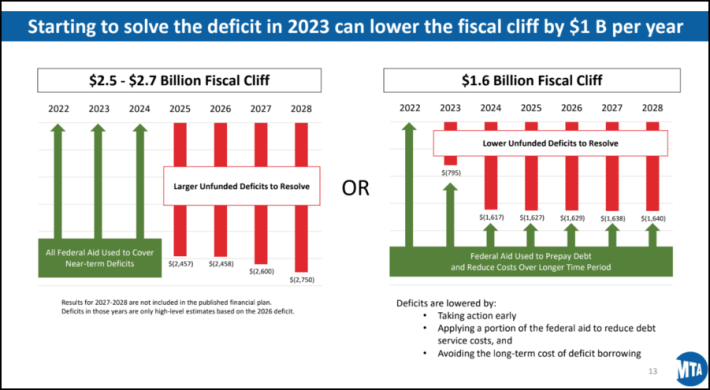
In one scenario, the MTA can use all of its remaining federal aid to paper over its deficits through 2024, which would result in $2.46-billion deficit in 2025. In the other scenario, New York State can find a new source of revenue to allow the MTA to stretch out the federal aid until 2028, a move that would require $1.6 billion each year from 2024 to 2028.
If anything, the MTA's own case for a new funding source has been understated. The agency has mostly talked about its budget through the lens of using federal funding to paper over the gaping holes in the wall, but as a report from Reinvent Albany points out, the situation looks extremely dire when that federal aid is taken out of the equation. The MTA has been taking in $200 million less in fares per month in 2022 compared to 2019, a situation that doesn't seem like it will improve overnight. Even the most optimistic ridership scenario sees 88 percent of riders returning by 2026, which would still mean millions less in fare money compared to before the pandemic.
MTA Chairman and CEO Janno Lieber has recognized that reality and has spent the past year making his case that public transit is an essential service on par with sanitation public schools and should therefore not be funded by user fees, which he was saying even before this summer's more dire financial picture.
Lieber brought his "We Need Money" tour as far as the Somos legislative conference/rum tasting in Puerto Rico, which he talked about on Thursday at the City and State Transportation Forum.
"I'm really optimistic about where this is headed," said Lieber. "I went to Puerto Rico for the Somos conference so I could talk to 25 legislators all in one place in two days. And the pretty universal response was that people get that this is the time to deal with mass transit funding issues. Cutting service would have a devastating effect on working-class or middle-class New Yorkers, as would excessively raising fares, We cannot cut service for people in the Bronx, Upper Manhattan, Queens or Brooklyn."
But even with Lieber's use of the bully pulpit to center equity in his call for more state funding for transit, the MTA bigwig hasn't pushed for as much money as the rallygoers on Thursday want.
"We're saying their baseline, absolutely the $1.6 billion," said Riders Alliance Director of Communication Danny Pearlsetin. "But given $200, $300, $400 million, you can run a lot more service on top of that baseline level. And so the $1.6 billion is just to get back to zero, but that's not good enough. And there's a smaller increment above it, that makes a very big difference."
Pearlstein described the push for something more than the minimum to keep the lights on as a break from 2010's service cuts and the imposition of a transformation plan in 2019 that led to service cuts years later.
"The last two times the MTA was rescued by the state, with the payroll mobility tax in 2010 and congestion pricing in 2019 [which is only for long-term repairs], there was a false notion of shared sacrifice that was enacted into policy. And the result was steep service cuts in 2010, and transformation, which became crew shortages, and de facto service cuts in 2021 and 2022 that really hamstrung the recovery of transit," said Pearlstein.
Where that $1.6 to $2 billion comes from is anyone's guess. Lieber has consistently declared himself agnostic as to the source of the MTA's new money, putting the onus on legislators to figure it out. Gov. Hochul, who'll ultimately be the one to start the budget process in January, merely said that she's still figuring out where the money will come from.
"Gov. Hochul took action last year to avoid a fare hike or service reductions, and she is committed to providing safe, quality, and reliable transit service to riders," Hochul spokesperson John Lindsay (no, really) said in a statement. "We will continue working with federal partners and state legislators on how to best support public transit."
One legislator suggested fixing the mistake that was the gas tax holiday, which, speaking objectively, was a stupid policy that resulted in gas companies getting almost one-third of the tax savings for themselves. This year, the state has another opportunity to change the allocation of the gas tax so that it favors transit more than highway projects (currently 63 percent of gas tax revenue funds highway work, but flipping it so that 63 percent goes to transit would mean more than $500 million for the MTA right there).
"When we cancelled the gas tax this year, gas companies just pocketed the money," said Assembly Member Emily Gallagher, a Democrat of Brooklyn. "So I think it'd be much more prudent to put that money towards public transit and really work on building the network."
Dave Colon is a reporter from Long Beach, a barrier island off of the coast of Long Island that you can bike to from the city. It’s a real nice ride. He’s previously been the editor of Brokelyn, a reporter at Gothamist, a freelance reporter and delivered freshly baked bread by bike. Dave is on Twitter as @davecolon. Email Dave Colon at dcolon@streetsblog.org
Stay in touch
Sign up for our free newsletter
More from Streetsblog New York City
Trump Trial Street Closures Push Pedestrians, Cyclists into Busy Traffic
News vans have dangerously blocked the sidewalk and bike lane on Lafayette Street daily since Donald Trump's trial began nearby two weeks ago.
Eyes On The Street: Coastal Resiliency Causes Mess For Pedestrians and Cyclists
Unfortunately for cyclists and pedestrians, this situation won't be fixed until "at least 2026.”
State Pols Still Haven’t Spent Millions Alloted for Transit as Congestion Pricing Looms
There's like $45 million sitting there — unspent — for outer borough transit improvements. What are state pols waiting for?
Supporters, Mayor Rally for ‘City of Yes’ Zoning Change as it Enters Public Review Phase
The mayor's signature zoning plan is ready for review by all 59 community board, plus the city's five borough presidents and then each Council member. Advocates are worried it will be watered down.
